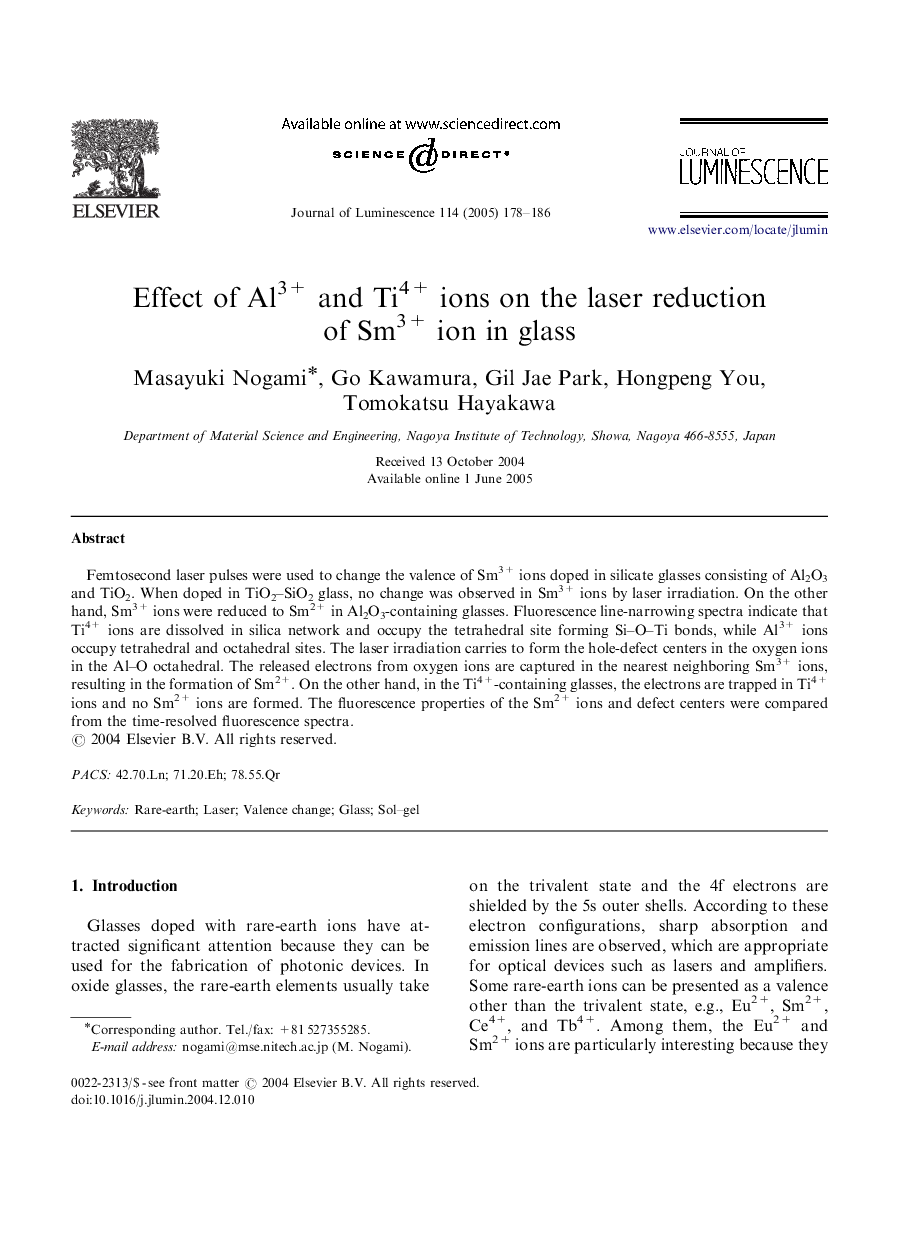| Article ID | Journal | Published Year | Pages | File Type |
|---|---|---|---|---|
| 9586327 | Journal of Luminescence | 2005 | 9 Pages |
Abstract
Femtosecond laser pulses were used to change the valence of Sm3+ ions doped in silicate glasses consisting of Al2O3 and TiO2. When doped in TiO2-SiO2 glass, no change was observed in Sm3+ ions by laser irradiation. On the other hand, Sm3+ ions were reduced to Sm2+ in Al2O3-containing glasses. Fluorescence line-narrowing spectra indicate that Ti4+ ions are dissolved in silica network and occupy the tetrahedral site forming Si-O-Ti bonds, while Al3+ ions occupy tetrahedral and octahedral sites. The laser irradiation carries to form the hole-defect centers in the oxygen ions in the Al-O octahedral. The released electrons from oxygen ions are captured in the nearest neighboring Sm3+ ions, resulting in the formation of Sm2+. On the other hand, in the Ti4+-containing glasses, the electrons are trapped in Ti4+ ions and no Sm2+ ions are formed. The fluorescence properties of the Sm2+ ions and defect centers were compared from the time-resolved fluorescence spectra.
Related Topics
Physical Sciences and Engineering
Chemistry
Physical and Theoretical Chemistry
Authors
Masayuki Nogami, Go Kawamura, Gil Jae Park, Hongpeng You, Tomokatsu Hayakawa,
